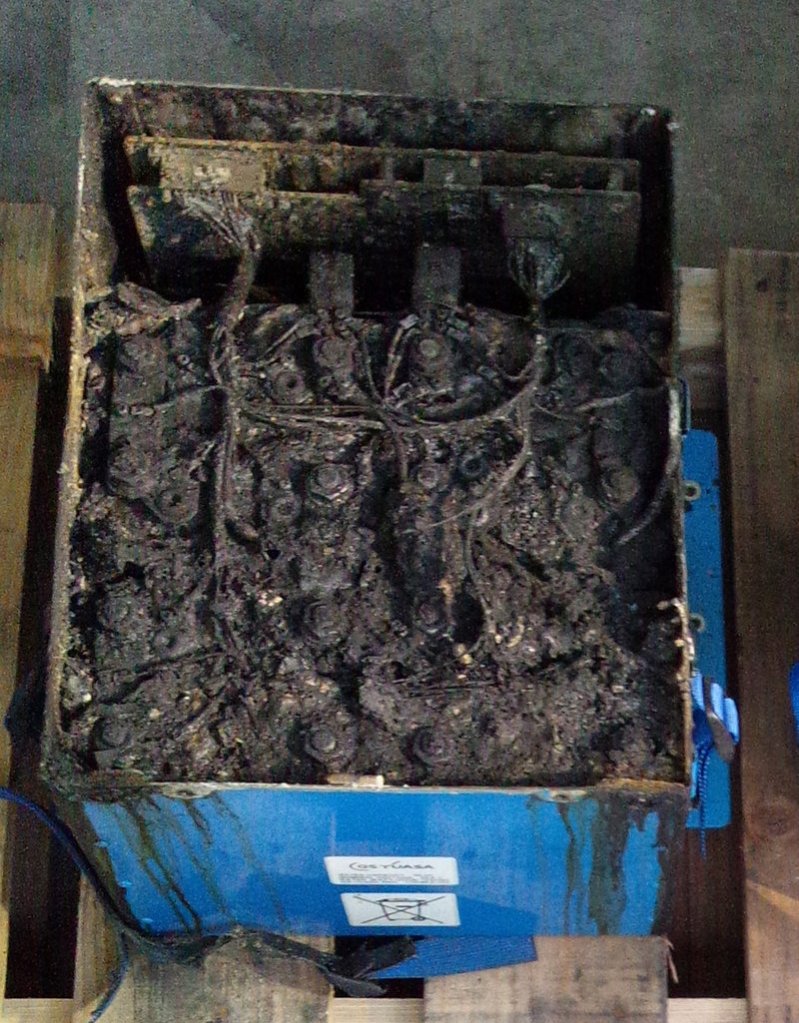WASHINGTON – It’s likely that fires on two Boeing 787 Dreamliners were caused by overcharged lithium ion batteries, aviation safety and battery experts said Friday, pointing to developments in the investigation of the Boeing incidents as well as a battery fire in a business jet more than a year ago.
An investigator in Japan, where a 787 made an emergency landing earlier this week, said the charred insides of the plane’s lithium ion battery show the battery received voltage in excess of its design limits.
The similarity of the burned battery from the All Nippon Airways flight to the burned battery in a Japan Airlines 787 that caught fire Jan. 7 while the jet was parked at Boston’s Logan International Airport suggests a common cause, Japan transport ministry investigator Hideyo Kosugi said.
“If we compare data from the latest case here and that in the U.S., we can pretty much figure out what happened,” he said.
In the case of the 787 in Boston, the battery in the plane’s auxiliary power unit had recently received a large demand on its power and was in the process of charging when the fire ignited, said a source familiar with the investigation. The plane had landed a short time earlier and was empty of passengers, although crews were working in the plane.
The Federal Aviation Administration issued an emergency order Wednesday temporarily grounding the six 787s belonging to United Airlines, the lone U.S. carrier operating Boeing’s newest and most technologically advanced airliner. The Japanese carriers already had grounded their 787s, and airlines and civil aviation authorities in other countries followed suit, shutting down all 50 Dreamliners that Boeing has delivered so far.
A battery fire in a Cessna Citation CJ4, a business jet, prompted the FAA in October 2011 to issue an emergency order requiring the lithium ion batteries in all 42 of the jets in operation at that time to be replaced with a conventional nickel-cadmium or lead-acid battery. The fire occurred while the plane was hooked up to a ground charging station at Cessna’s aircraft completion center in Wichita, Kan.
The Citation was Cessna’s first business jet with a lithium ion battery as its main battery, and the 787 is the first airliner to make extensive use of lithium ion batteries. But the two are vastly different in size and in other respects, including their electrical systems, making comparisons difficult. Their batteries also came from different makers.
However, the three incidents — the two 787 fires and the Citation fire — underscore the vulnerability of lithium ion batteries to igniting if they receive too much voltage too fast, experts said. Other types of batteries may overheat if they are overcharged, but they are far less susceptible to starting a fire, they said.
Send questions/comments to the editors.



Success. Please wait for the page to reload. If the page does not reload within 5 seconds, please refresh the page.
Enter your email and password to access comments.
Hi, to comment on stories you must . This profile is in addition to your subscription and website login.
Already have a commenting profile? .
Invalid username/password.
Please check your email to confirm and complete your registration.
Only subscribers are eligible to post comments. Please subscribe or login first for digital access. Here’s why.
Use the form below to reset your password. When you've submitted your account email, we will send an email with a reset code.